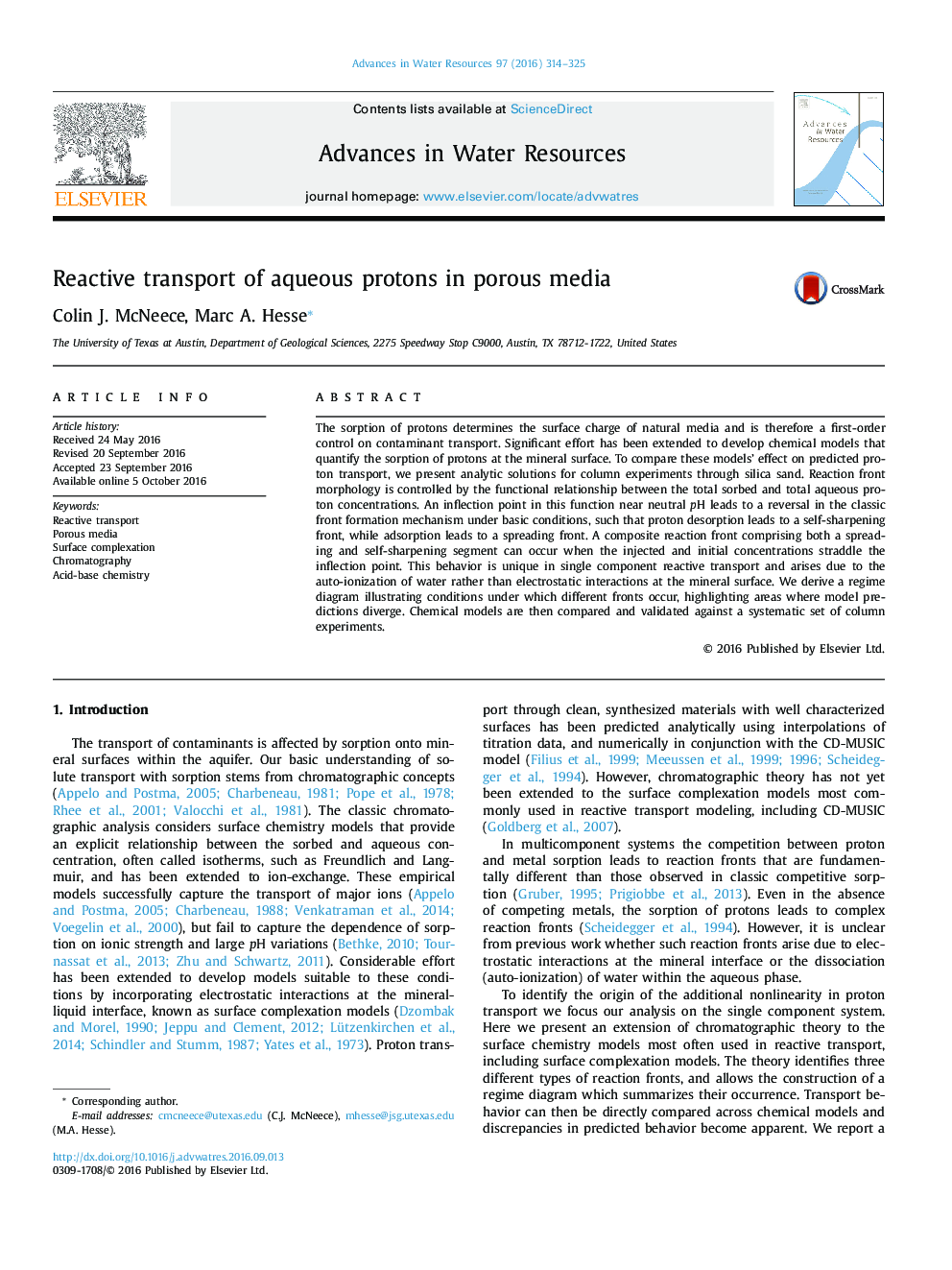| Article ID | Journal | Published Year | Pages | File Type |
|---|---|---|---|---|
| 6380607 | Advances in Water Resources | 2016 | 12 Pages |
â¢Chromatogrpahic theory is extended to surface complexation models.â¢Composite acidity fronts form due to the auto-ionization of water.â¢All models, including non-electrostatic, predict composite fronts.
The sorption of protons determines the surface charge of natural media and is therefore a first-order control on contaminant transport. Significant effort has been extended to develop chemical models that quantify the sorption of protons at the mineral surface. To compare these models' effect on predicted proton transport, we present analytic solutions for column experiments through silica sand. Reaction front morphology is controlled by the functional relationship between the total sorbed and total aqueous proton concentrations. An inflection point in this function near neutral pH leads to a reversal in the classic front formation mechanism under basic conditions, such that proton desorption leads to a self-sharpening front, while adsorption leads to a spreading front. A composite reaction front comprising both a spreading and self-sharpening segment can occur when the injected and initial concentrations straddle the inflection point. This behavior is unique in single component reactive transport and arises due to the auto-ionization of water rather than electrostatic interactions at the mineral surface. We derive a regime diagram illustrating conditions under which different fronts occur, highlighting areas where model predictions diverge. Chemical models are then compared and validated against a systematic set of column experiments.
